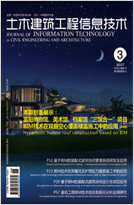Abstract:
On the basis of summarizing and analyzing the current situation of intelligent building system integration technology and industry, this paper analyzes the existing difficulties of intelligent building system integration, and puts forward the system integration mode of whole life cycle of Engineering Based on digital twin theory, that is, the digital twin system integration method of intelligent building. This paper presents the development and implementation method of digital twin building integration system based on configuration software platform, and points out that a prominent trend of digital twin building integration system is sharing. Facilities, tools, information, data and services can be shared and exchanged through the sharing platform. It is suggested that the urban information model (CIM) should adopt the complex system engineering thinking based on the model, and be established on the basis of the interconnection of digital twin buildings. This is also a feasible way to construct CIM rapidly at present.










 下载:
下载: